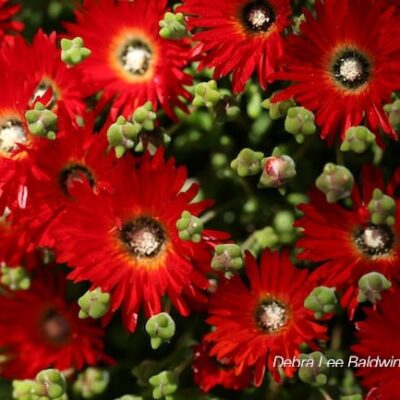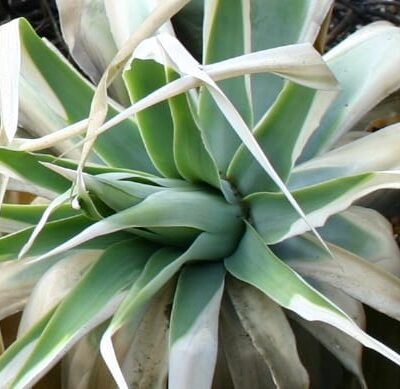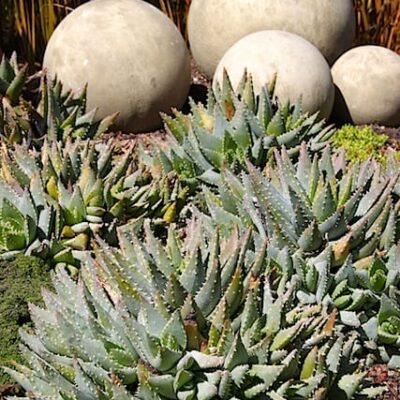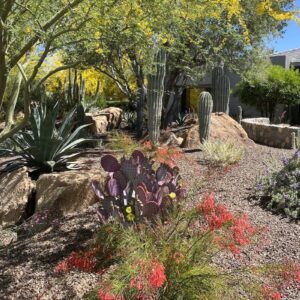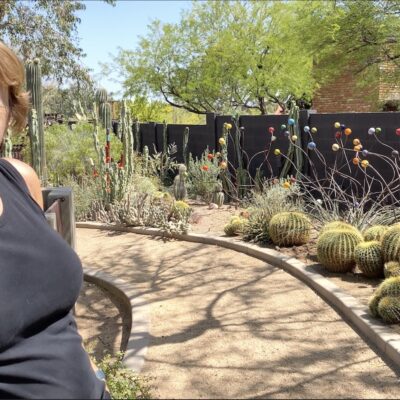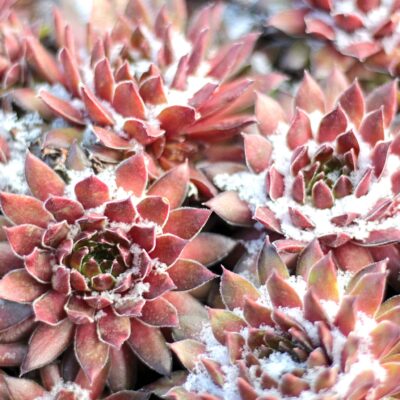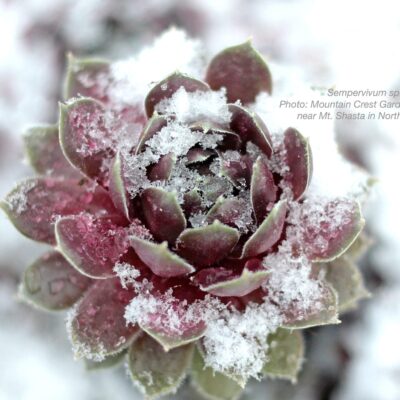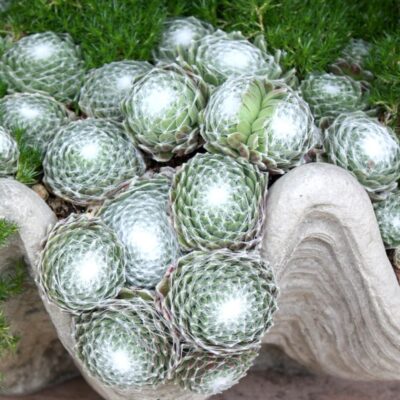Your Region and the Season Matter
Where you live and the time of year make a big difference as to how well your succulents grow and perform, and even which kinds you should choose---especially if they're in the open garden. Indoors or in a greenhouse, you have more control over the environment, but seasons still affect cyclical aspects of growth such as flowering and dormancy.
How to grow anything, anywhere
Here's the secret: Replicate its native growing conditions as closely as possible.
Obviously, the more you know about a plant, the better you'll be able to keep it alive and thriving.
Most---but not all---succulents come from areas of the world that are hot and dry, with minimal rainfall. These plants are best suited to USDA zones 9 and 10, although they will survive outdoors in zones 8 and 11 with adequate protection from frost, excessive heat, and moisture.
This ideal climate for growing succulents is found sporadically in latitudes from 20 to 40 degrees, notably marine-influenced, nontropical areas of the US Southwest, Mexico, South America, eastern China, southern Japan, South Africa, Australia, New Zealand and the Mediterranean. In other zones, especially during seasonal temperature extremes, tender succulents are best cultivated indoors.
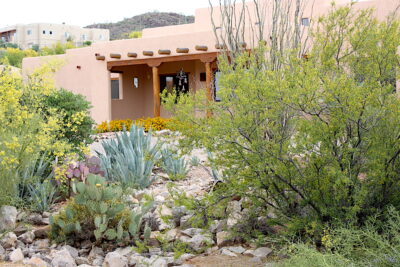
Arizona front yard with succulents
New to Arizona?
Succulents are desert plants, right? Wrong! Well, not all of them anyway. Scroll down to the "DESERT" section for what to expect when gardening with succulents in the Phoenix area.
Resources
Videos
Succulents and Too Much Rain: What you Need to Know (2:47) It can be death to succulents to overwater them, yet under certain circumstances, they can handle much more water than they need.
See an Artist's Desert Succulent Garden (10:22) Janet Orr's delightful outdoor sculpture gallery shows her eye for design, skill as a ceramic artist, and superb succulent savvy.
Growing Succulents in Northerly Climates, Sempervivums (9:03) - The basics, plus design ideas and exciting new cultivars.
Growing Succulents in Northerly Climates: Sedums and More (7:08) - Cool succulents for cold climates plus how to select, grow and design with them.
Debra Lee Baldwin’s Southern CA Succulent Garden in Spring (3:12)
See what's blooming and what needs doing.
Debra Lee Baldwin's Southern CA Succulent Garden in Summer (10:34)
On an 89-degree day I give a tour of my garden, noting what's in bloom, lookin' good (or sadly dreadful), and checking the health of succulents small and large.
Post-Summer Care for Succulents (6:49) I show and explain how to deal with scorched tips, sunburn, mealy bugs, shriveled leaves, yellowed stems, burned patches, dead-looking succulents, keeled-over cactus and cochineal scale.
Books
"Seasonal Care for Succulents" on pages 74-75 of my book, Succulents Simplified.
"Cultivating Succulents in Challenging Climates" pp. 143-148 of Designing with Succulents (2nd ed.)
Seasonal Succulent Care
Spring
Spring in My Succulent Garden
See numerous low-water flowering plants that thrive with minimal care in my Zone 9b Southern CA garden. My spring garden’s most vivid blooms are those of succulent ice plants. Aloes, bulbine and numerous arid-climate companions are bright and beautiful from March through mid-May. Increasing temps tend to put the kibosh on delicate spring flowers. If…
Summer
Summer Care for Succulents: Heat and Sun Concerns
Don’t let summer sun and heat harm your succulents! Heat generally isn’t a concern. Although some succulents (like sempervivums) tend not to thrive in temps above 80 or 90 degrees F, the majority are fine. It’s heat plus sun that’s the concern.
Autumn
Frost and Succulents: What You Need to Know
Depending on how long temps stay below freezing (32 degrees F), “frost tender” succulents may show varying degrees of damage. When moisture in the cells of a vulnerable plant freezes, it expands, bursts cell walls, and turns leaves to mush. In a “light frost,” leaf tips alone may show damage (“frost burn”). In a “hard frost,” temps stay…
Winter
Oh No, My Succulents Froze!
Will your succulents recover from frost damage? It depends. Here’s how frost-tender succulents looked before temps dropped into the mid-20s F, and after: Here’s the same Euphorbia ammak ‘Variegata, after the frost: Likelihood of recovery: Nil. Too much of the tissue was damaged. But what about the Euphorbia tirucalli ‘Sticks on Fire’ behind it? It’s hope of recovery is excellent because…
Regional Succulent Care
California Inland
In Bakersfield, Fresno, Sacramento and CA's Inland Empire, succulents except cacti (scroll down to "Desert") tend to suffer from prolonged heat in summer and frost in winter. To find those that will do well for you:
- Visit local succulent specialty nurseries.
- Explore your neighborhood for succulents in front yards. Take photos of plants and groupings you like.
- Browse the local Cactus & Succulent Society's Facebook group. Fresno's, for example, has over 300 members. Collectors grow specimen plants in pots and may cultivate them in the open garden as well.
- If you've brought succulents you love, start them in pots. Move them in summer to a shady location (like a patio); and in winter, beneath eaves that provide frost protection alongside exterior walls.
- Growing succulents beneath trees that moderate temperatures is an option unless they drop all their leaves in winter, have dense roots, and/or create deep shade.
- A better option, if you have room, is a sun sail. Improved versions are heavy-duty, water-permeable and block 95% of UV rays.
Bay Area
How to Grow Succulents in San Francisco (Bay Area) Gardens
HOW TO GROW SUCCULENTS in San Francisco (Bay Area) Gardens A plant is “succulent” if it stores water in fleshy leaves and stems in order to withstand periods of drought. Cultivate species native to arid climates (the majority) in warm, sunny areas of your garden, in mounded, fast-draining soil. Protect from prolonged dampness,…
Coastal Southern California
No-Water Succulents for Southern California Gardens
Above: I based one of my most popular videos on the agave section of my bestselling book, Designing with Succulents. Both explain what you need to know to select and grow agaves successfully, and both show those best for gardens, close-up and in-ground. Some agaves are hardy to 15 degrees or less! And when small,…
Desert
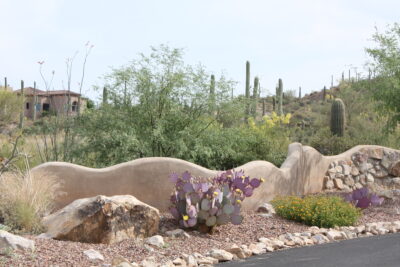
Arizona succulent garden
I'm grateful to Nancy Mumpton of the Central Arizona Cactus & Succulent Society for this advice on growing soft (non-spiny) succulents in the Phoenix Metropolitan Area. Nancy explains why such plants tend to go downhill in summer, and what to do about it:
Succulents in the genera Crassula, Echeveria, Sedum, Sempervivium, Aeonium and more close their pores during hot summer days (starting in June) and open them on nights when it cools down adequately. In other words, they breathe at night. The technical term for this is Crassulacean Acid Metabolism (CAM).
In Phoenix, especially during the monsoon season (June through September), the nights do not cool down enough, but stay as high as 85 to 90 degrees. Consequently, CAM plants are unable to breathe effectively, and they suffer.
How to save soft-leaved succulents
Move them indoors to a cool but bright location in summer. Move them back outside when the nights start to cool down, usually late September. If they must stay outside all year, set them in the shade, give minimal water, and let them rest for the summer. "They will not look good and may lose leaves," Nancy says. "But in the fall they'll perk up, grow and look better."
Nancy suggests two Facebook groups that often deal with this topic: Arizona Cactus and Succulent and CentralArizonaCactus. "In June, you'll see all the problems that people ask about CAM plants!" she says, adding that in Phoenix such succulents are sold at Home Depot, Lowe's, many garden centers and even at the Desert Botanical Garden. Consequently residents assume soft-leaved succulents should do well in their climate, and blame themselves when they fail to thrive.
She also notes: "There are some areas of AZ like in the northern parts of the state and even Tucson that are somewhat cooler than Phoenix in the summer, where the problem is not as great."
Learn more:
Great Plants and Ideas from Arizona Gardens
These plants and ideas inspired by the annual spring Phoenix Garden Tour will work throughout the Southwest. What grows effortlessly in Arizona typically does well in dry, hot areas of Southern California—except of course for
See Rich Zeh’s 30-Year Succulent & Cactus Collection
Rich Zeh has an Aladdin’s trove of cacti and succulents. “I’m pretty much maxed out on space,” he says of his one-acre garden and greenhouse in Paradise Valley (Phoenix) Arizona.
Design Ideas from an Arizona Artist’s Garden
Wait ’til you see these desert garden design ideas at Arizona artist Janet’s Orr’s home! Her whimsical outdoor gallery shows her eye for design, skill as a ceramic artist, love of color, and superb succulent savvy.
Succulents for Northerly Climates
In general, the farther away you go from the Epicenter of All Things Succulent (coastal and southern CA), the fewer varieties of succulents you'll be able to grow successfully outdoors, and the smaller their size. Learn more:
Showy Succulents for Snowy Climates (Debra’s WSJ Article)
Showy Succulents for Snowy Climates This is the unabridged original of the article I wrote for the Wall Street Journal. Is it a given that Northerners can’t grow succulents? Not at all. Granted, most of these moisture-storing, arid-climate plants prefer warm, sunny habitats. Yet in response to demand, major growers are cultivating tough, showy varieties that…
50 Cold-Hardy Succulents for Northern Climates
The popular and readily available varieties shown here can handle northern winters, snow, rainstorms (if given excellent drainage) and summer dry spells. There are two main genera: Sedum and Sempervivum. Lesser known are Rosularia, Delosperma, and Orostachys. Notably, certain species of Agave and cacti don’t freeze in all but the coldest climates.
How to Grow Tender Succulents in Cold, Northerly Climates
With the exception of sempervivums, jovibarbas, many sedums and yuccas, and certain cacti and ice plants, the majority of succulents are frost-tender. Although they can tolerate temps down to freezing and in excess of 90 (if shaded), between 40 and 80 degrees is ideal. But you can grow any succulent, anywhere, if you understand its needs.
Southern US, Florida, Hawaii
It may surprise you that aeoniums---which originate in the Canary Islands and the northwestern coast of Africa---love Southern CA but don't do well in Florida or Hawaii. The latter have high humidity and summer rainfall, which Southern CA doesn't. The same goes for echeverias, which are native to Mexico.
If you live where humidity and rainfall are high, consider succulents as annuals, get a dehumidifier, or grow "tropical" varieties (see pages 145-146 of Designing with Succulents, 2nd ed.).

